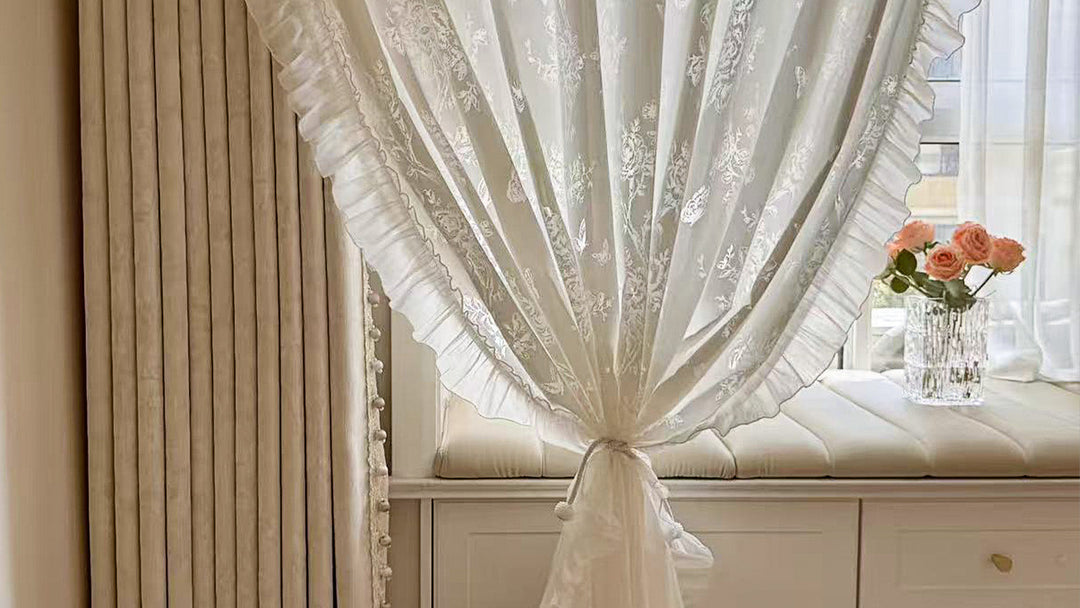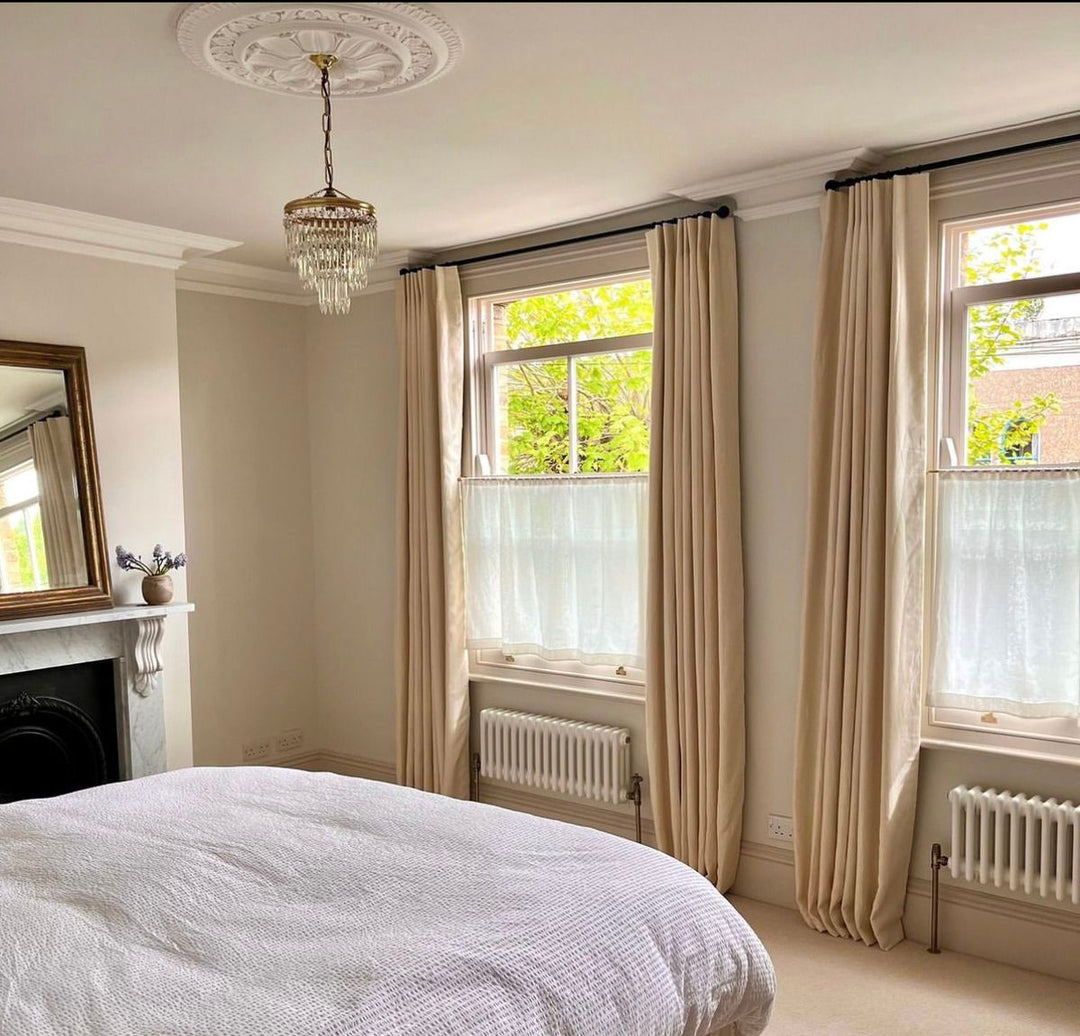Outline
| Heading | Description |
|---|---|
| Introduction to Measuring for Drapes | Why proper measurement is crucial for drapery success |
| What Are Drapes and Why Size Matters | Definition and the importance of precision |
| Tools You Need to Measure for Drapes | Essential items for an accurate measurement |
| Understanding Window Types and Frame Styles | How different windows affect measurements |
| Step-by-Step Guide: How to Measure for Drapes | Full instructions from start to finish |
| How to Measure the Width for Drapes | Determining rod and panel width accurately |
| How to Measure the Length for Drapes | Floor, sill, apron, or puddle length explained |
| Choosing the Right Drape Fullness | How to calculate pleat and gather ratio |
| Tips for Mounting Drapes Inside or Outside the Frame | The pros and cons of each mounting option |
| Drapery Heading Styles and Their Impact on Measurements | Grommet, rod pocket, pinch pleat, tab top |
| How to Measure for Bay Window Drapes | Dealing with angles and custom rods |
| How to Measure for Corner or L-Shaped Windows | Multi-panel setups and curved rods |
| How to Measure for French Doors and Sliding Glass Doors | Vertical spaces that require custom sizing |
| Drapes vs. Curtains: Do the Measurements Differ? | Clarifying confusion between terms |
| Common Measurement Mistakes to Avoid | The biggest pitfalls and how to prevent them |
| How to Choose the Right Rod for Your Measurements | Supporting weight and visual proportion |
| Measuring for Layered Drapes | Tips for sheers, liners, and double rod systems |
| Custom vs. Ready-Made Drapes: Measurement Differences | How sizing expectations change |
| How Fabric Type Influences Your Measurements | Weight, drape, and stretch considerations |
| How to Measure for Motorized Drapery Tracks | Getting the right size for tech installations |
| Printable Measurement Chart and Template | DIY guide to record your data accurately |
| FAQs | Clear answers to common drapery questions |
| Conclusion | Wrap-up on mastering drapery measurements |
| Internal and External Link Suggestions | Trusted sources for products and tutorials |
How to Measure for Drapes
Perfectly fitting drapes can completely transform a room—adding elegance, softness, and practicality. But before you shop or order custom panels, you must know how to measure for drapes the right way. A small miscalculation can lead to drapes that sag, bunch, or hang awkwardly. This step-by-step guide will teach you exactly how to get precise width, length, and fullness measurements for any window style.
Introduction to Measuring for Drapes
Measuring for drapes isn’t just a matter of pulling out a tape and jotting down numbers. It’s an essential process that considers the window size, mounting height, drapery style, and desired visual impact. Whether you're aiming for dramatic floor-length panels or a neat café curtain look, accurate measurements ensure your drapes hang just right—no dragging, gapping, or light leakage.
What Are Drapes and Why Size Matters
Drapes are fabric panels designed to cover windows for decorative and functional purposes—like blocking light, insulating space, and enhancing privacy. Unlike standard curtains, they are typically lined and heavier, and often extend from ceiling to floor. That makes accurate measurement crucial, as improperly sized drapes can throw off the entire balance of a room.
Tools You Need to Measure for Drapes
Before you start, gather:
-
A metal measuring tape (not fabric or plastic)
-
A pencil and paper or printable template
-
A step stool or ladder for high windows
-
A level or straight edge (optional for alignment)
For high-precision projects, a laser measure can be helpful.
Understanding Window Types and Frame Styles

Your window type impacts how you measure:
| Window Type | Notes |
|---|---|
| Single-hung/double-hung | Measure above trim if mounting outside |
| Bay windows | Measure each section separately |
| Sliding glass doors | Measure full width and from top of frame to floor |
| Corner windows | Account for overlap and rod angles |
Frame depth and shape determine whether inside or outside mount is best.
Step-by-Step Guide: How to Measure for Drapes
There are two main measurements: width and length. Each depends on how and where you plan to hang the curtains.
How to Measure the Width for Drapes
-
Measure the width of your window, including trim if doing an outside mount.
-
Add 8–12 inches on each side for fullness and to allow the drapes to open fully.
-
Multiply the total width by 1.5 to 3 times to get the ideal fullness depending on your desired look.
| Look | Fullness Ratio |
|---|---|
| Tailored | 1.5x |
| Standard | 2x |
| Luxurious | 2.5–3x |
This gives you the total fabric width needed, not just the rod length.
How to Measure the Length for Drapes
Choose your drape length style:
-
Sill length: Ends at the window sill
-
Apron length: 4–6 inches below the sill
-
Floor length: Ends just above the floor
-
Puddle length: 1–6 inches of fabric resting on the floor
Measure from the top of the curtain rod (not the window) to the desired drop point.
Choosing the Right Drape Fullness
Fullness determines how your drapes hang. It’s calculated as:
Fullness = Finished width ÷ Window width
Aim for at least 2x fullness for most fabrics. Lightweight sheers may benefit from 3x, while heavy velvets may need only 1.5x.
Tips for Mounting Drapes Inside or Outside the Frame
| Mount Type | Pros | Cons |
|---|---|---|
| Inside | Clean look, good for trim | Limits light blocking and width |
| Outside | Better light coverage, dramatic | Requires more wall space |
For maximum light control and room height illusion, mount rods 4–6 inches above the frame and extend rods 8–12 inches beyond each side.
Drapery Heading Styles and Their Impact on Measurements
Header type affects how much fabric you need and where to start measuring:
-
Grommet: Measure from the top of the rod
-
Rod pocket: Measure from top of fabric (rod goes inside pocket)
-
Pinch pleat: Measure from eye of hook
-
Tab top: Include tab length in total drop
Adjust length based on the curtain style and how it attaches to the rod.
How to Measure for Bay Window Drapes
-
Use a flexible tape to follow the curve or angle
-
Measure each window section individually
-
Consider custom rods or bendable track systems
-
Allow for overlap where sections meet
Sketch the layout to track each measurement.
How to Measure for Corner or L-Shaped Windows
For L-shaped configurations:
-
Measure each wall section separately
-
Account for rod diameter at the corner
-
Decide if panels will meet in the middle or overlap
Corner connectors or double rods help manage curtain flow.
How to Measure for French Doors and Sliding Glass Doors
For French doors:
-
Measure top to bottom of the glass panel or frame
-
Choose sill or floor length
-
Add 1–2 inches width for privacy overlap
For sliding doors:
-
Measure full door width
-
Extend rod 8–12 inches beyond on one or both sides
-
Drop from ceiling or frame to floor
Drapes vs. Curtains: Do the Measurements Differ?
Technically, drapes are heavier and longer, often lined. Curtains may be casual, shorter, and unlined. But measurement methods are the same—just consider fabric weight and fullness needs.
Common Measurement Mistakes to Avoid
-
Forgetting to include rod height
-
Not accounting for header style
-
Ignoring curtain stack-back room (space for open curtains)
-
Using curtain width as rod width
-
Measuring with fabric tape (inaccurate)
Double-check your work before ordering or cutting.

How to Choose the Right Rod for Your Measurements
The rod should:
-
Be long enough to allow curtain stacking
-
Have center support brackets if over 60 inches
-
Match the curtain weight and header style
Use wraparound rods for blackout and thermal drapes.
Measuring for Layered Drapes
For double rod systems:
-
Measure both outer and inner layers (sheers and panels)
-
Account for rod drop difference (front rod hangs lower)
-
Coordinate lengths if you want uniformity
Layered looks need careful attention to detail.
Custom vs. Ready-Made Drapes: Measurement Differences
Custom drapes require:
-
Exact window-to-floor measurements
-
Precise fullness calculations
-
Attention to return space (fabric from rod to wall)
Ready-made options may require hemming or spacing compromises.
How Fabric Type Influences Your Measurements
-
Heavy fabrics hang straighter—use less fullness
-
Sheers and linens flow more—need more fabric
-
Stiff fabrics may not gather well—opt for pleated styles
Always order samples if in doubt.
How to Measure for Motorized Drapery Tracks
-
Measure exact track length
-
Include stack-back space (area needed for open curtains)
-
Account for motor housing
-
Confirm electrical access points for installation
Accuracy is key with automation systems.
Printable Measurement Chart and Template
Create a simple worksheet with columns for:
-
Window location
-
Width
-
Height
-
Mounting type
-
Curtain style
-
Header style
-
Notes (fabric, rod, extras)
Helps keep everything organized when shopping or ordering.
FAQs
How high should I hang drapes above a window?
4–6 inches above the window frame is standard; closer to the ceiling creates height.
Should drapes touch the floor?
Yes, for a polished look. You can go flush, graze, or puddle.
What’s the ideal fullness for drapes?
2x the window width is a good starting point.
Can I use one panel per window?
Yes, but two panels allow better light and privacy control.
Are curtain measurements per panel or total?
Most product listings show width per panel—always double-check.
How do I measure if I want blackout coverage?
Use outside mount, extend rod width, and hang higher to block light from all edges.
Conclusion
Knowing how to measure for drapes is the first and most important step toward a flawless window treatment. By getting your width, height, and fullness right—and choosing your rod, header, and mounting style wisely—you’ll enjoy drapes that look custom-made and function beautifully. Whether you're dressing a dramatic bay window or a modest kitchen nook, the perfect fit starts with a perfect measurement.
Internal and External Link Suggestions
Internal Links:
External Links:








